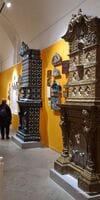The Museum of Architectural and Artistic Ceramics "KERAMARKH" is one of the museums in the Peter and Paul Fortress (Zayachy Ostrov) St. Petersburg.
The museum is located in a historical building on the territory of the fortress-the Sovereign Bastion, which was a defensive structure of the Peter and Paul Fortress, intended for conducting frontal and flanking fire.
On the roof of the bastion there is a panoramic route "Nevsky Panorama", which everyone can walk along.
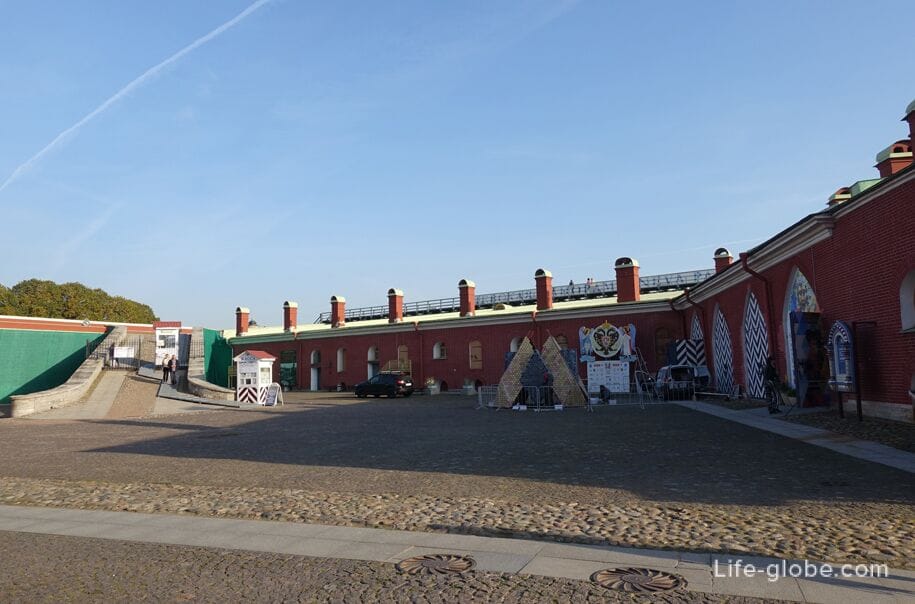
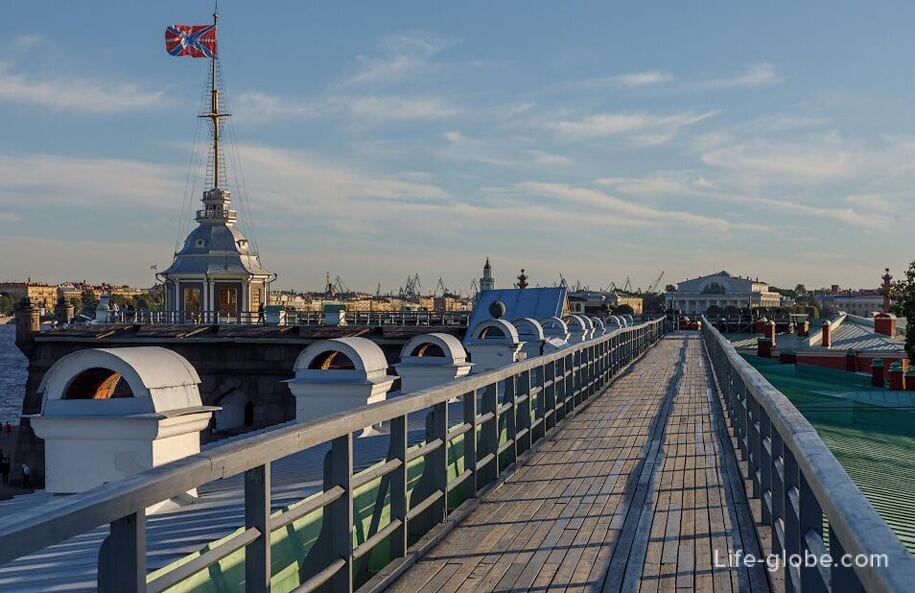
Museum of Architectural and Artistic Ceramics "KERAMARKH»
The museum's exposition, located in several halls, presents the history of the development of decorative ceramics in the architecture and interior decoration of the 18th and early 20th centuries and has more than 200 exhibits.

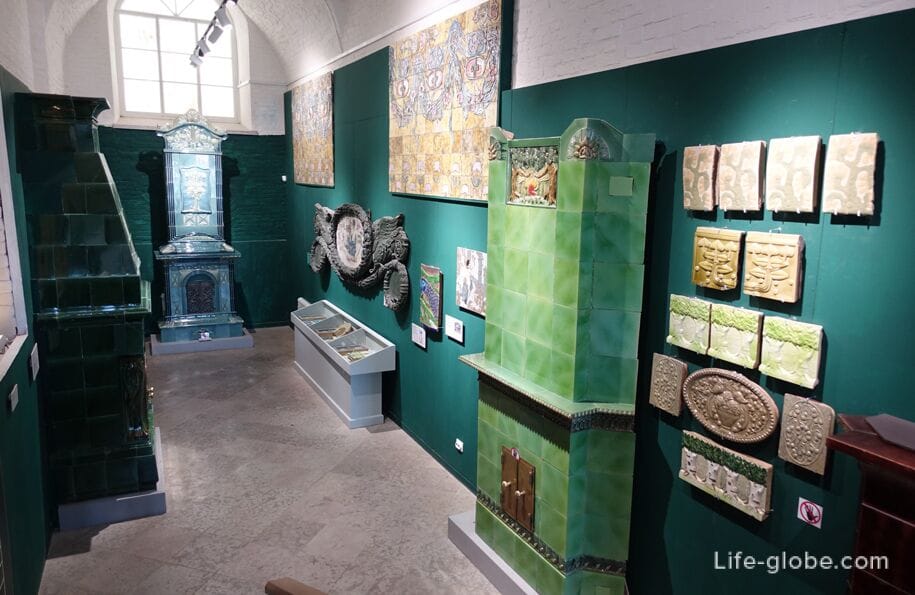
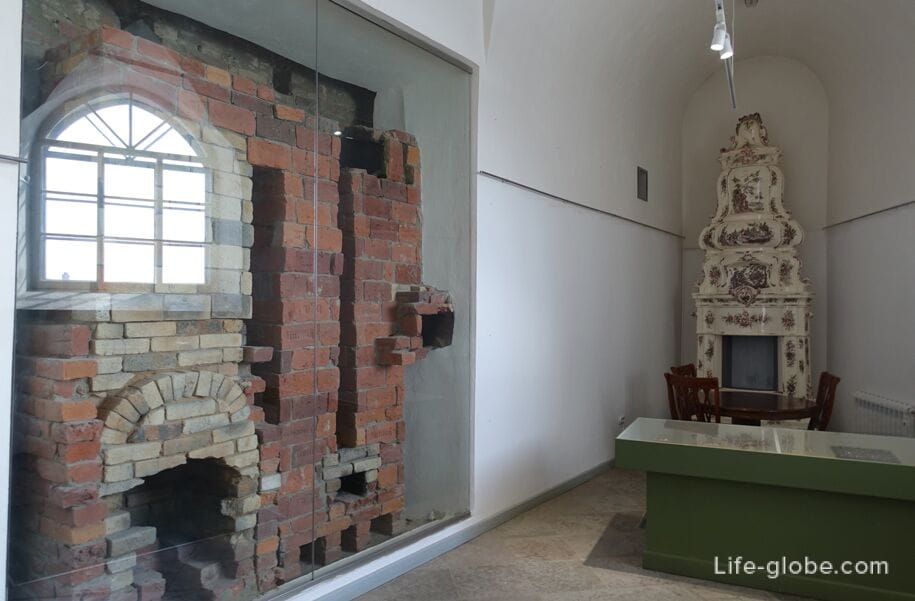

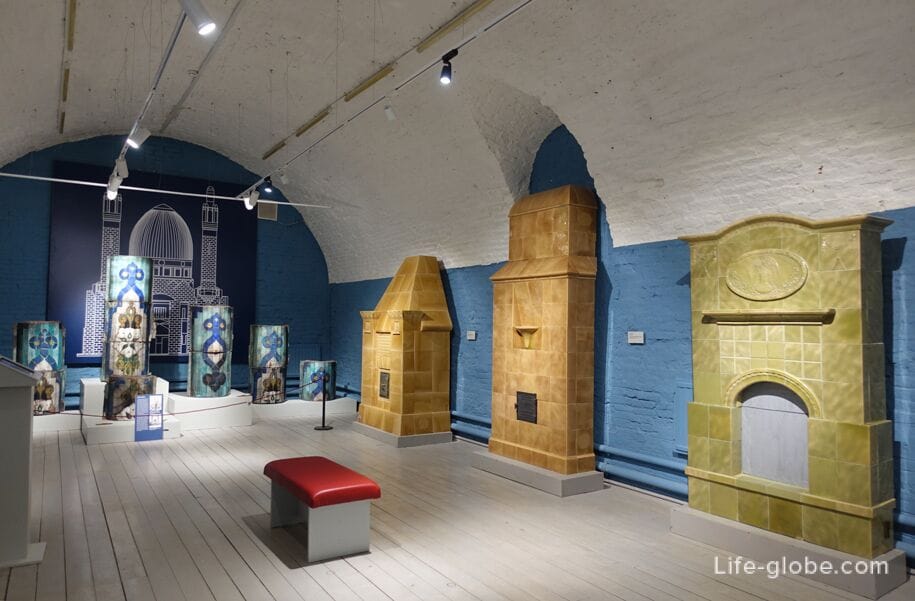
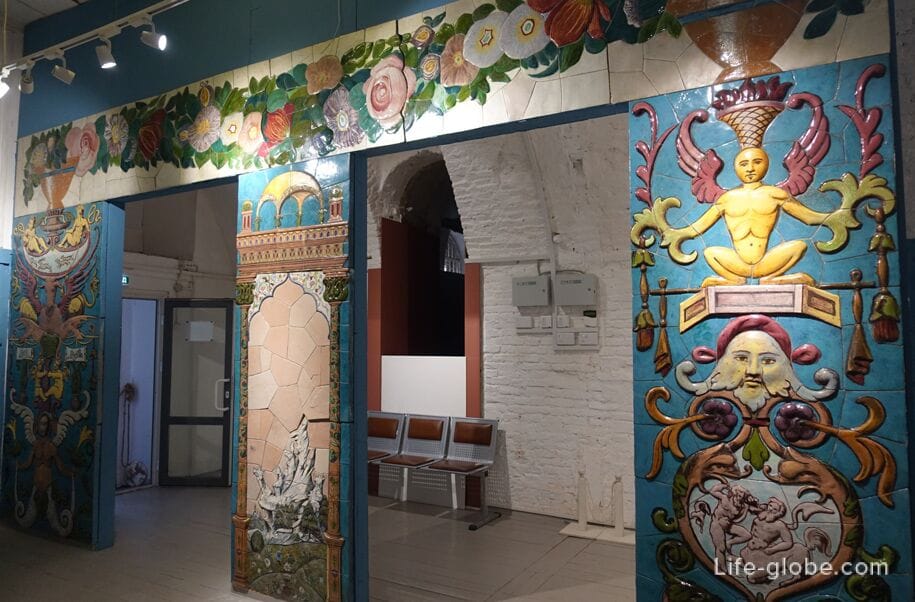
Among the exhibits of the museum:
- various stoves and fireplaces;
- samples of the decoration of the facades of famous buildings in St. Petersburg: tiles of the domes of the Cathedral Mosque, fragments of the capitals of the facade of the building of the Petrograd Provincial Credit Society (now the House of Cinema), samples of the roof tiles of the A.V. Suvorov Museum. The largest exhibit is a seven-meter panel with a grotesque composition from the facade of the house on Labor Square;
- icons painted on a ceramic base and enclosed in multicolored ceramic kiosks;
- exquisite Dutch tile tiles, which gives an opportunity to take a fresh look at the unique decoration of the rooms of the Menshikov Palace and other exhibits.
Among the exhibits of the museum, special attention should be paid:
- works of architects A.P. Bryullov, F.I. Lidval, A.I. Stackenschneider, U. Ulberg and the famous ceramic artist P.K. Vaulin;
- samples of architectural ceramics produced by leading domestic and European manufacturers: the ceramic workshop of L. Bonafede, the partnership for the production of porcelain and faience products of M. S. Kuznetsov, the art and ceramic production of "Geldwein-Vaulin", the Rakkolaniok pottery factory, the Abo factory, the Saxon furnace factory of Ernst Teichert in Meissen, etc.
Oven lining. Rakkolaniok pottery factory. White clay, molding, white glaze, firing, overglaze painting, gold painting, secondary firing.
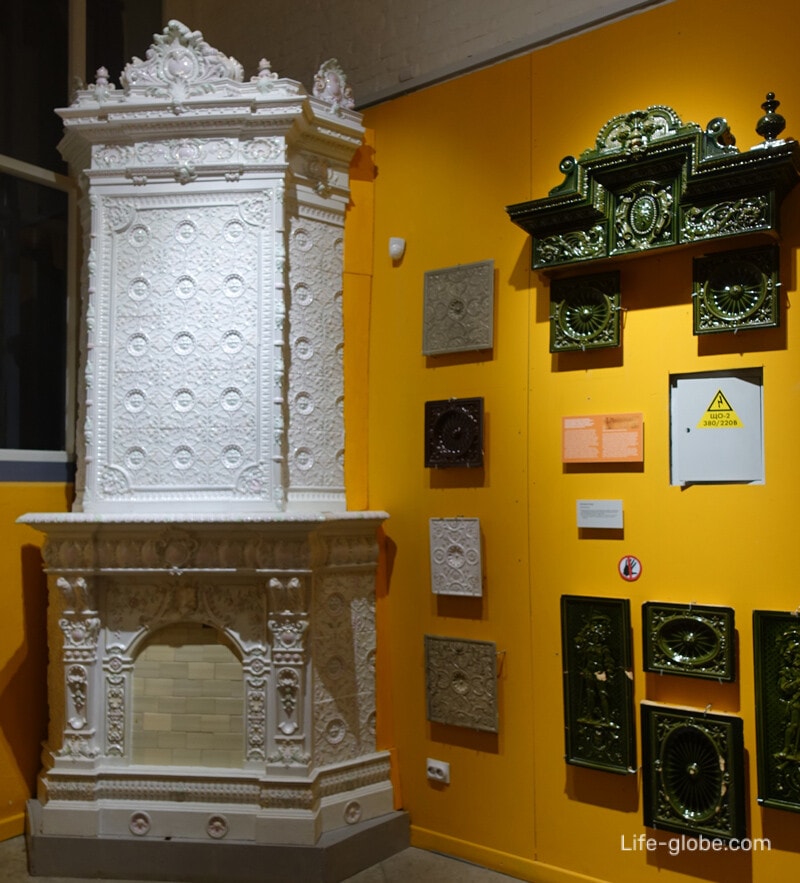
Oven lining Abo Tile Factory, Turku, Grand Duchy of Finland. White clay, molding, colored glazes, firing.
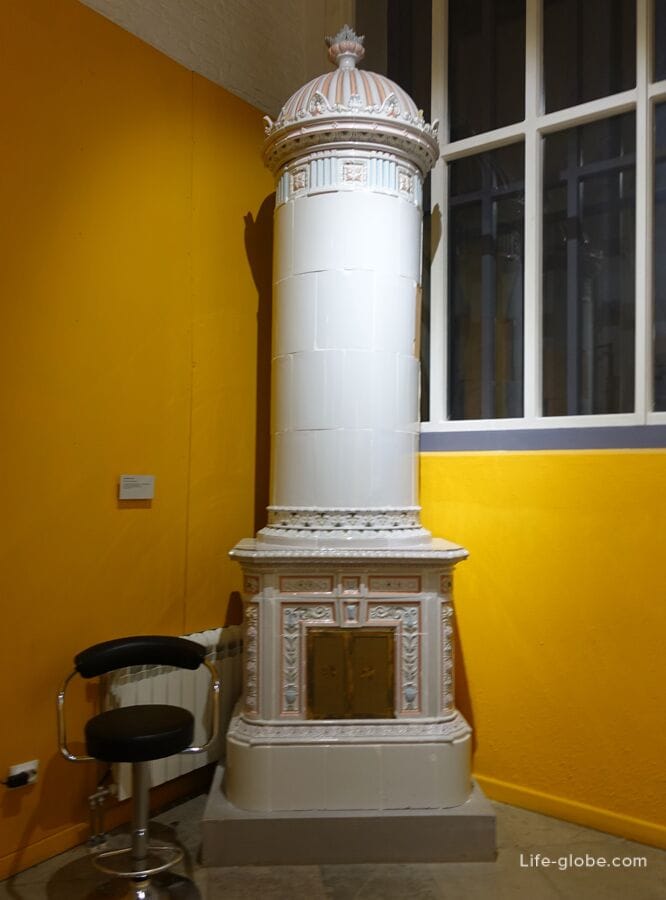
Facing of the Brunhilda furnace. Designed by German designer Paul Obst. Abo tile factory. Red clay, molding, colored glaze, firing.
It comes from an apartment building at 31 Lermontovsky Ave., rebuilt in 1907 by architect L. Ya.Natkin.

Stove tiles. Abo tile factory. White clay, molding, colored glazes, firing.
They come from various apartment buildings in St. Petersburg.
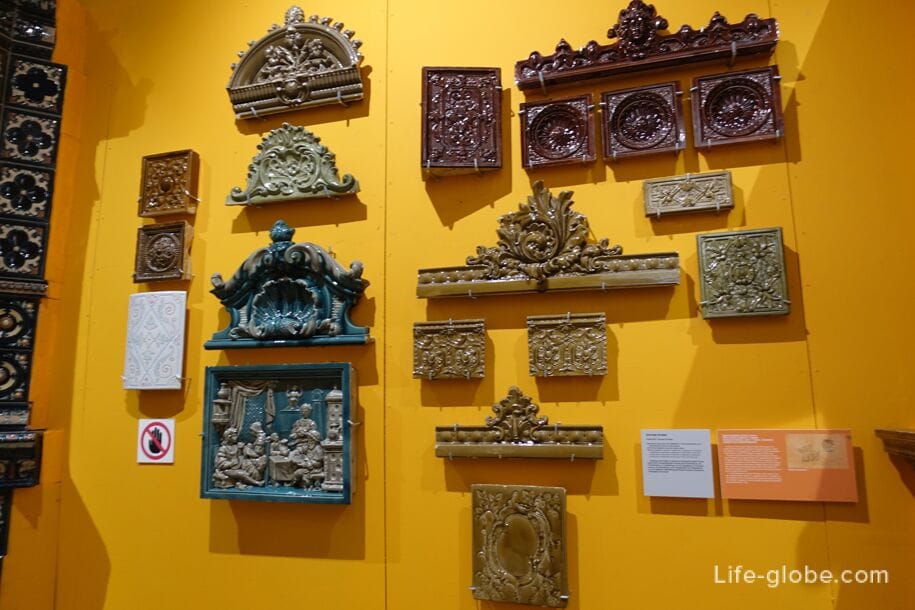
Oven lining. Designed by A. I. Stackenschneider, 1861. Saint-Petersburg. Red clay, molding, white glaze, underglaze painting, firing.
The furnace originates from Nicholas Palace (Labor Square, 4), built in 1853-1863 by the architect A. I. Stackenschneider (1802-1865).
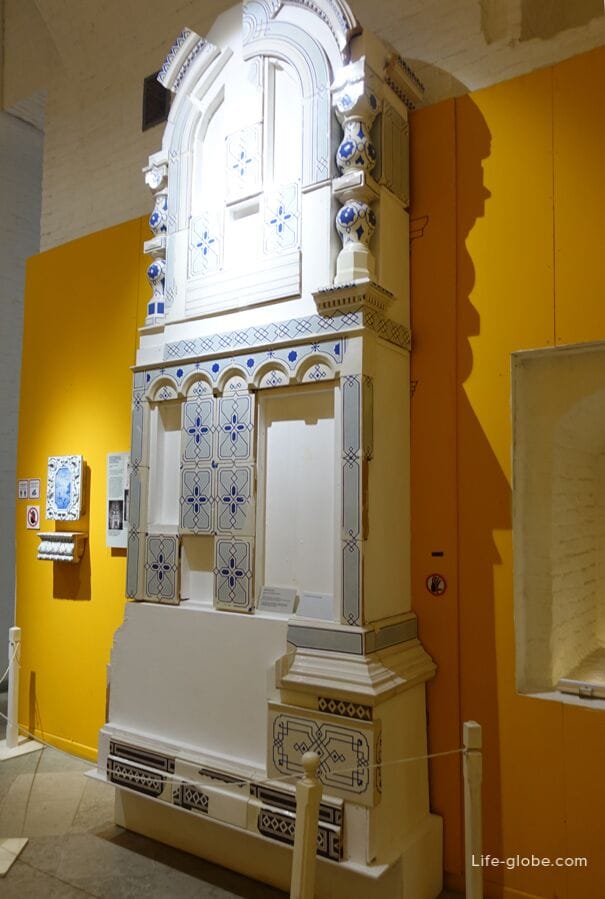
Oven lining. E. Teichert's Saxon furnace and fireclay factory, Meissen, Germany. Faience, molding, colored glazes, firing.
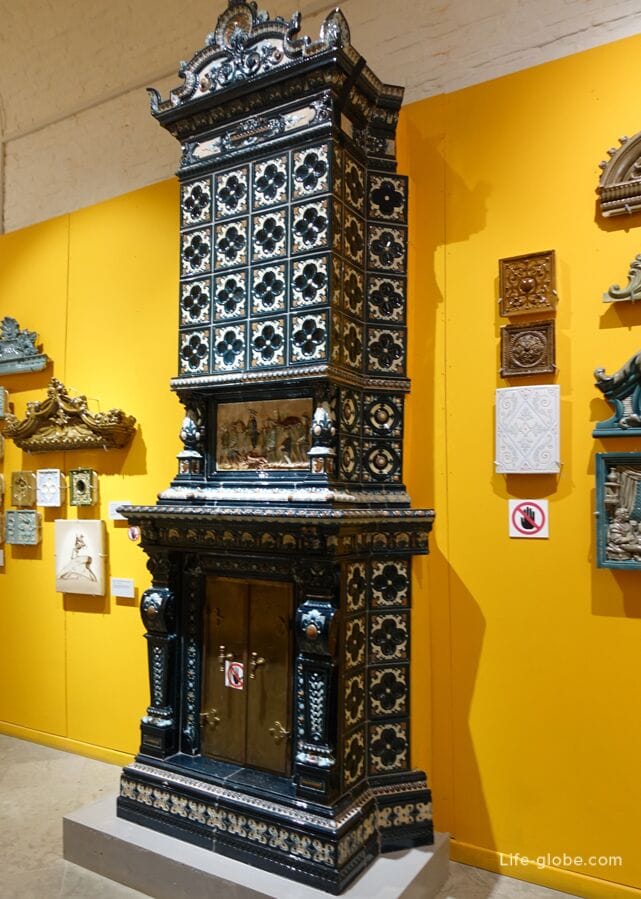
Stove tilesthat come from various apartment buildings in St. Petersburg. E. Teichert's Saxon furnace and Fireclay factory. White clay, molding, colored glazes, firing.
+ panel with the image A copper horseman from the same factory.
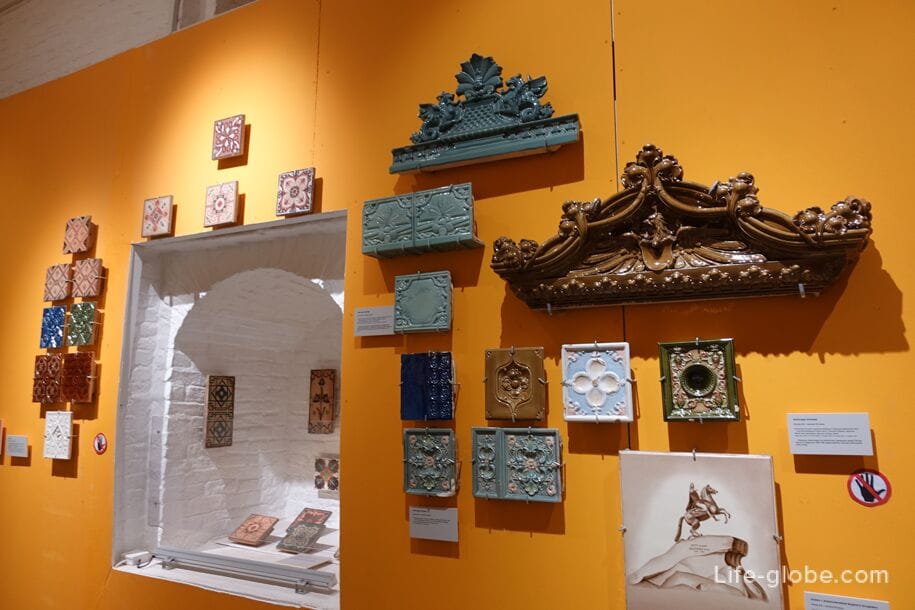

Fireplace stove. Artist O. L. Salmina, 2018. Pallada Restoration and Construction Company, St. Petersburg. Ceramics, molding, colored glazes, firing, painting with glazes.
Replica of the fireplace stove of the late 19th-early 20th centuries produced by the pottery and tile factory of the Partnership of A. Mereino and E. Libo, Vilna (Vilnius, Republic of Lithuania).
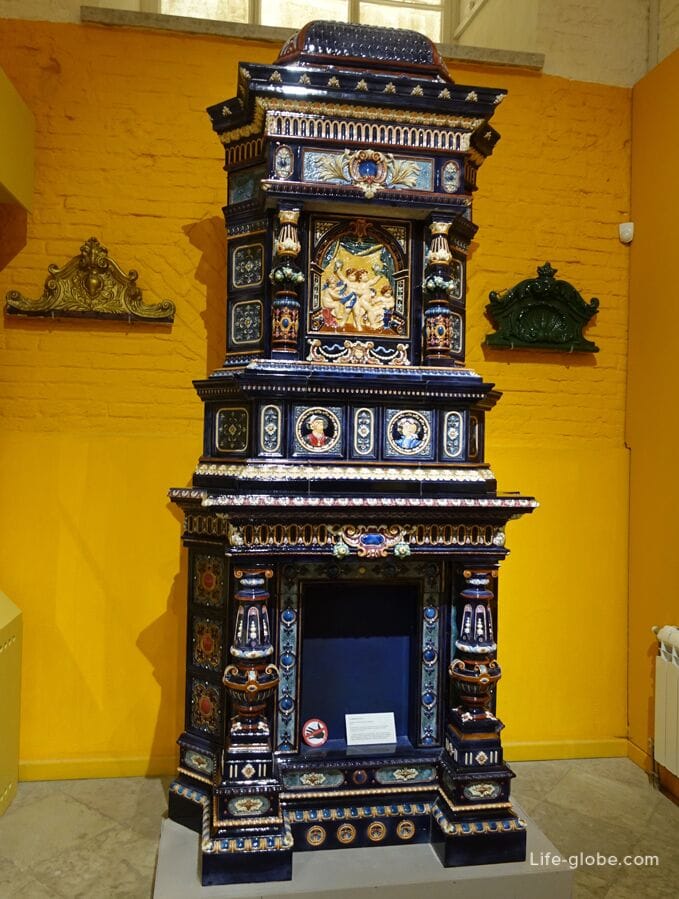
Oven lining. Saint-Petersburg. Red clay, molding, colored glazes, firing.
Received from the Alekseevs' mansion, Palace embankment, 20.

Facing of the fireplace. Not earlier than 1908.
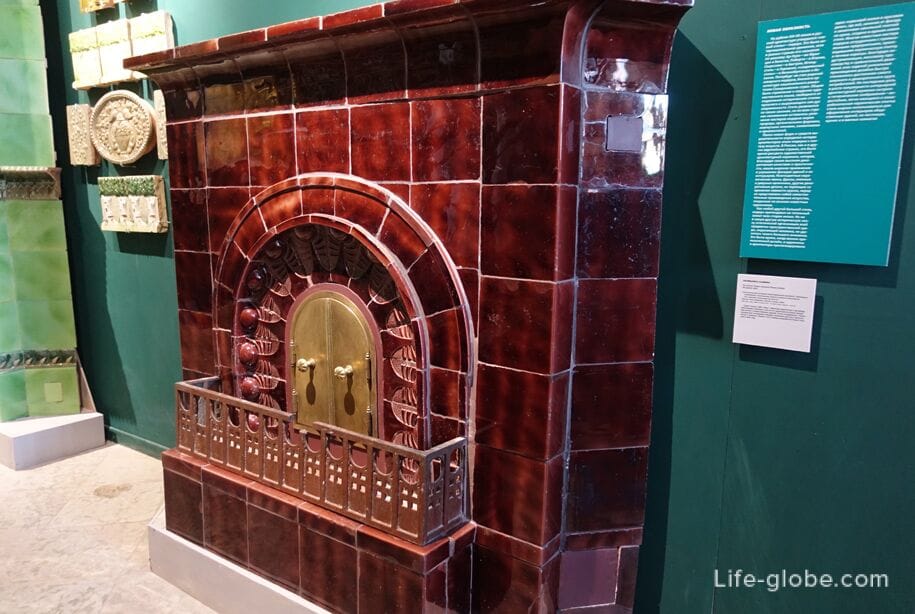
Facing of the furnace "Pine". According to the design of the architectural bureau "Usko Nyström-Petrelius-Penttila". Not earlier than 1902. Abo tile factory. Red clay, molding, colored glaze, firing.
The creative team, which included Usko Nyström (1861-1925), Albert Petrelius (1865-1946) and Vilho Penttila (1868-1918), played an important role in shaping the architecture of Finnish national romanticism. Masters have designed many buildings in the center of Helsinki and in addition to the construction practice actively engaged in other forms of professional activity. So, since 1902, the bureau has carried out a number of projects for the Abo plant of tiled stoves.
The Sosny furnace-one of the most popular models of the Abo plant-was developed in 1902.
It is represented by the facing of the furnace of one of the houses of the Nikolaev Society for the Care of the Poor of the St. Petersburg Trona (Pionerskaya Street).
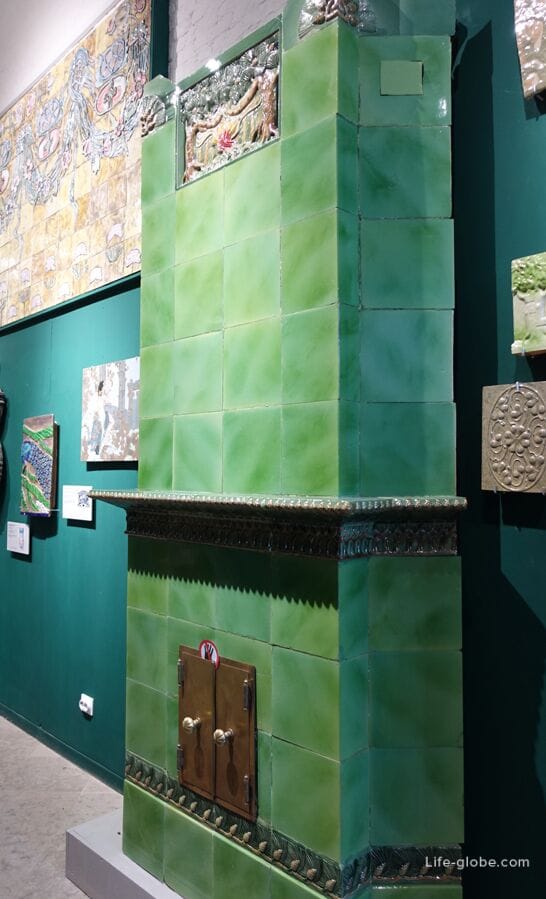
Oven lining. Based on a sketch by Karl Mayer. Not earlier than 1903. Abo tile factory. Red clay, molding, colored glazes, firing.
The model was developed in 1901-1902 by the designer of the factory of art and stove ceramics "I. F. P. Hausleiter" Karl Mayer at master classes at the Bavarian Museum of Crafts in Nuremberg under the direction of the famous German architect and designer Peter Behrens.
It is represented by the facing of the furnace from the apartment house of Baron V.A. von de Palen (Karavannaya Street, 14 / Fontanka River Embankment, 17).

Heating furnace, early 20th century. Saxony. Cast iron, nickel, black metal, painted with colored enamels.

Portable heating stove, late 19th century. Esch & K Factory, Mannheim, Germany. Cast iron, nickel, black metal; ceramics, painted with colored enamels.
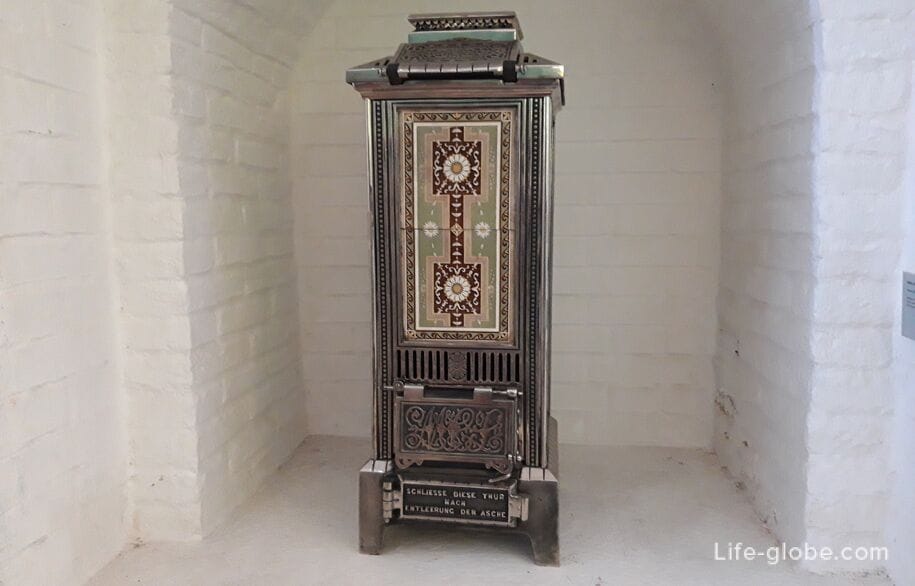
Decorative panels from the facade of the E. E. Bremme mansion, 1906. Art and ceramic production "Geldwein-Vaulin", Kikerino, St. Petersburg province. White clay, molding, colored glazes, firing, three-dimensional wood carving.
The panels were installed on the front facade of the E.E. Bremme mansion (the 12th line of Vasilievsky Island, 41) when it was rebuilt in 1906 by the architect V.S. Karpovich. Dismantled in 1971. Dated by the time the house was built.
During the restoration, made in 2018 by the company "Pallada", in the process of clearing the oval panel under the wooden frame, the signature in glazes was found: BCM.
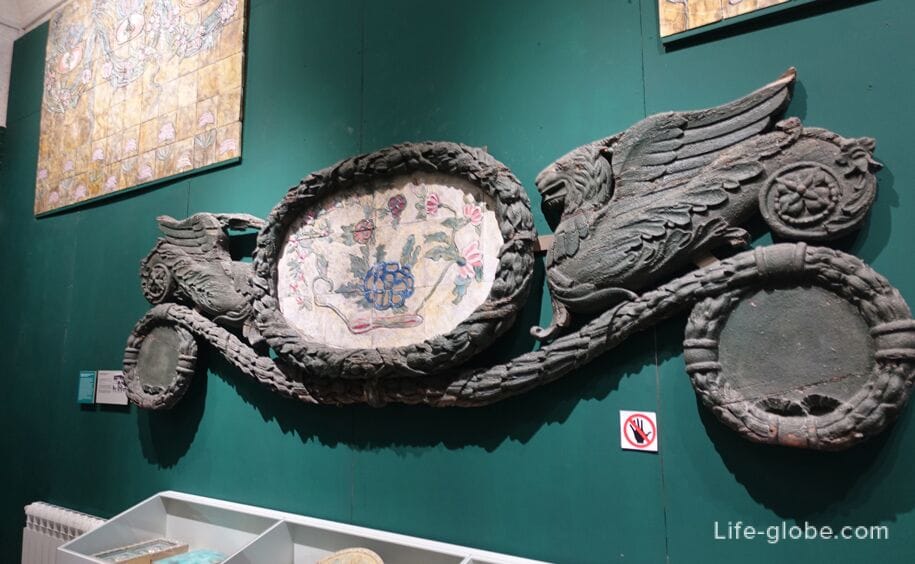

Stove tiles. Oven, porcelain and pottery factory "Mugeln", Mugeln, North Saxony, Germany. Faience, molding, colored glaze, firing.
The details of the furnace lining come from the apartment house of A.I. Balaev; 1914, architect S.V. Banige (11 Vereyskaya Street).
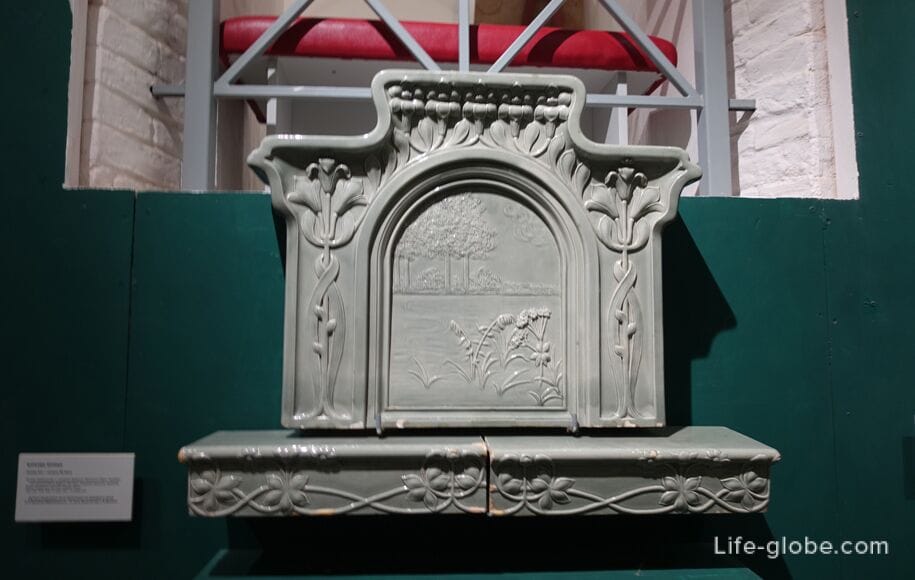
Oven lining, early 20th century. Ernst Teichert's stove and porcelain factory, Meissen, Germany. Red clay, molding, colored glazes, firing.

Facade frieze with the image of angels from the bell tower of the church of St. Anna Kashinskaya, 1907-1909. Art and ceramic production "Geldwein-Vaulin", Kikerino, St. Petersburg province. Ceramics, molding, colored glazes, firing.
The church in the name of the holy noble Princess Anna Kashinskaya was built in 1907-1909 by the architect A. P. Aplaksin in the neo-Russian style. The address of the church: 53 Bolshoy Sampsoniyevsky Ave.
The ceramic frieze, presumably designed by the sculptor A. T. Matveev, was located on the drum of the bell tower.
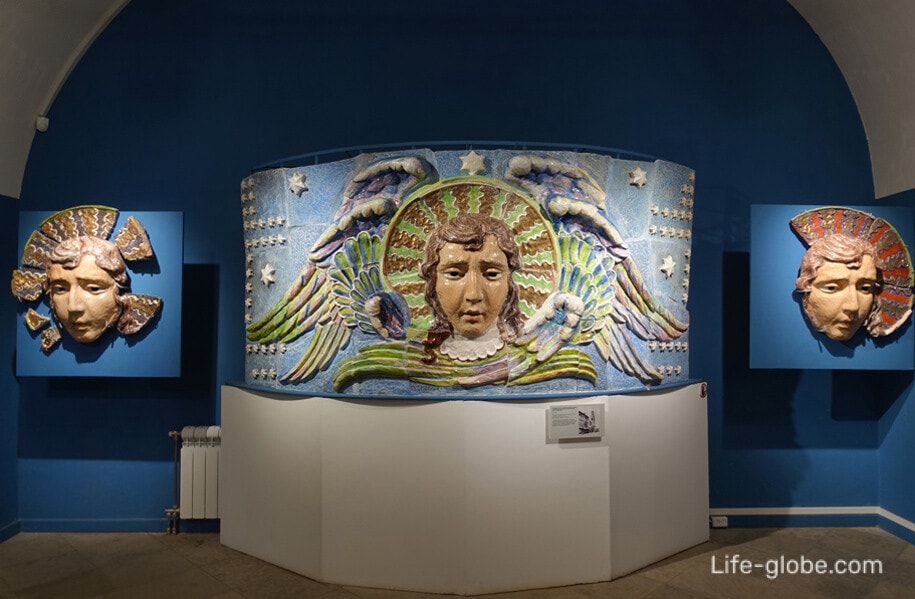
Kiot and the royal gate of the iconostasis of the Church of the Resurrection of Christ in the village of Zimovenka, 1900s. Tver Factory of the Association for the Production of porcelain, faience and majolica products by M.S. Kuznetsov, the village of Kuznetsovo, Tver province (the city of Konakovo, Tver Region). Faience, molding, colored glazes, gold painting, firing.
In the three-altar Resurrection Church in the village of Zimovenka, three iconostases (the central two-tier and one-tier side) were installed, designed in pink and turquoise with gold. The iconostases were significantly damaged during the Second World War. They were restored in 2011-1012 by the design and restoration workshops "Terem" (Yekaterinburg) with the replacement of some of the original parts.
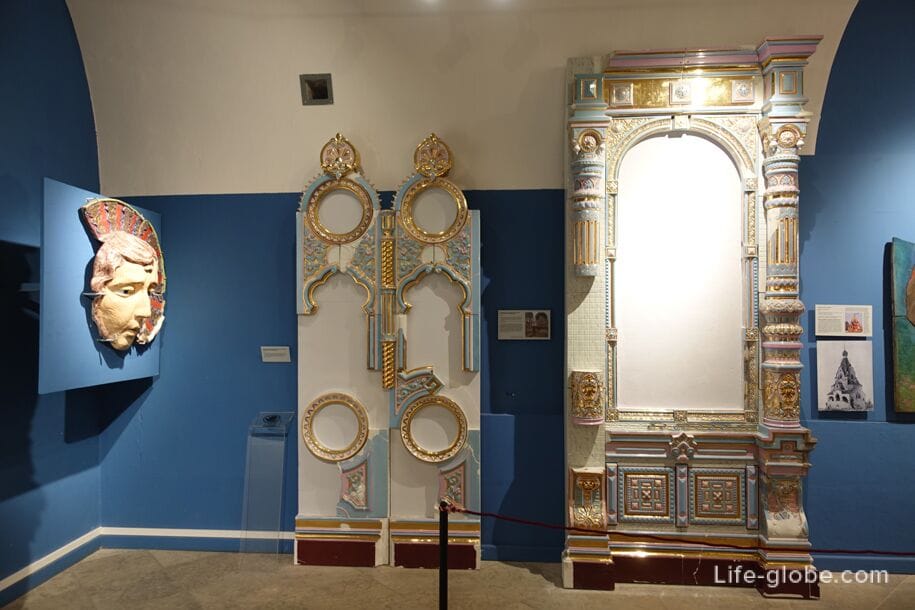
Kiosks and icons. Pallada Restoration and Construction Company, Saint Petersburg.

Tsarski vrata. Architect M.B. Litovskaya, 2018-2019. Restoration and production company "Pallada", St. Petersburg. Faience, molding, glaze, gilding, roasting.
One of the variants created for the lower church of the Annunciation Cathedral in Yoshkar-Ola.
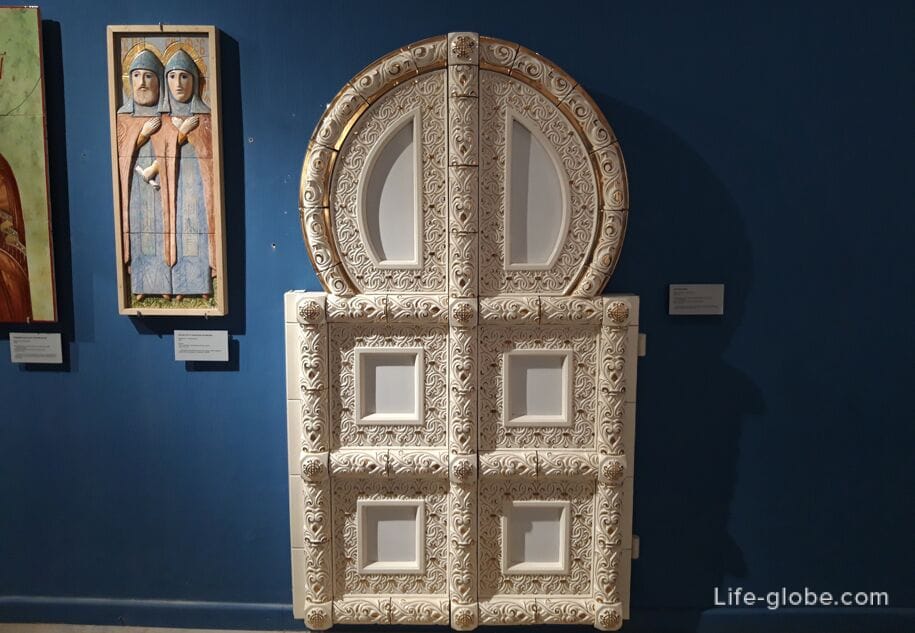
The emblem of the Guards Economic Society. Layout of the composition for the facade of the building of the Trading House of the Guards Economic Society( DLT), 2010. Pallada Restoration and Construction Company, Saint Petersburg.
The model was made during the restoration of the ceramic facade of the building of the Trading House of the Guards Economic Society (Bolshaya Konyushennaya Street, 21-23 / Volynsky Lane, 3).
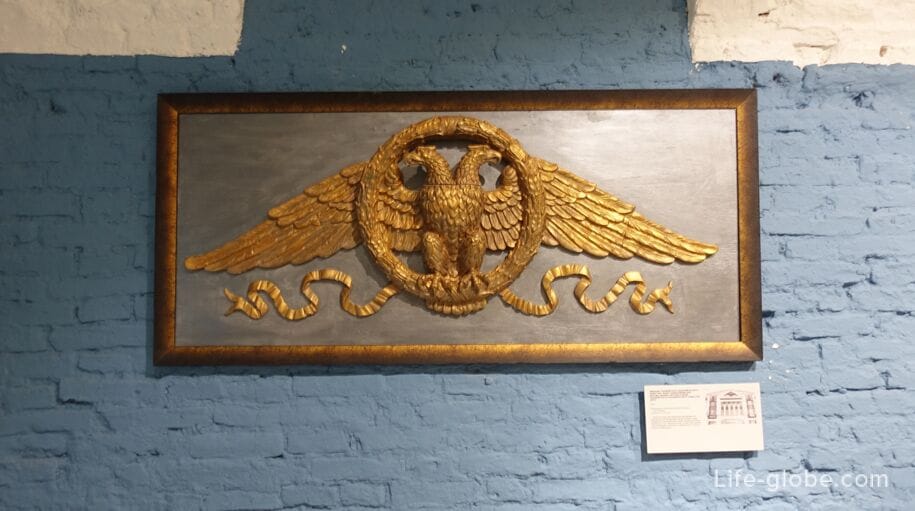
Details of the ceramic decoration of the facades of the building of the Petrograd Provincial Credit Society and the cinema "Splendid Palace" (House of Cinema), 1910s. Art and ceramic production "Geldwein-Vaulin". White clay, molding, restorative firing of the glaze.
The ceramic decoration of the facades of the building of the Petrograd Provincial Credit Society and the cinema "Splendid Palace" (12 Karavannaya Street) includes a cartouche with griffin figures, column capitals and balusters created in the technique of matallized ceramics imitating bronze.

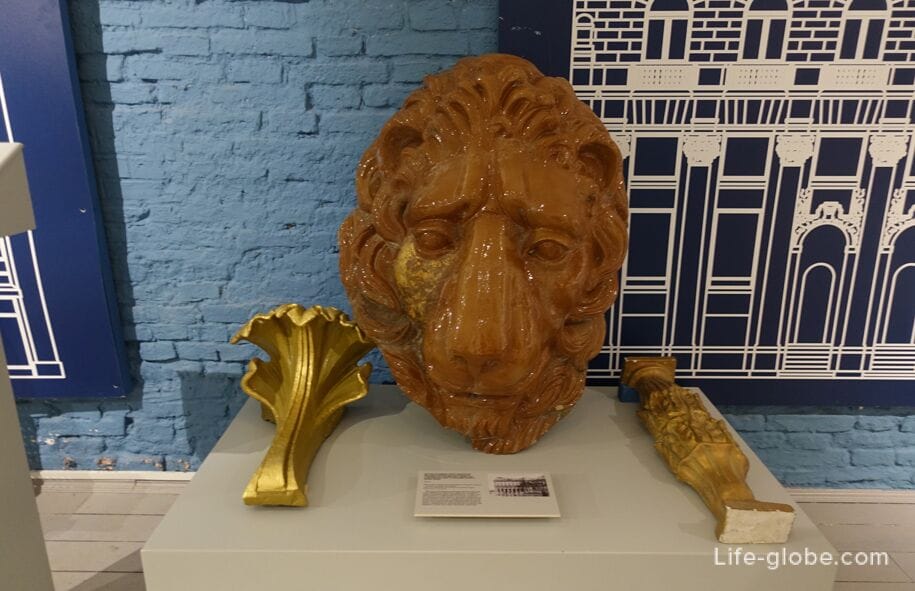
Fragments of the ceramic decoration of the facade of the library building of the Institute of Experimental Medicine, 1911-1913 and 2009-2013.
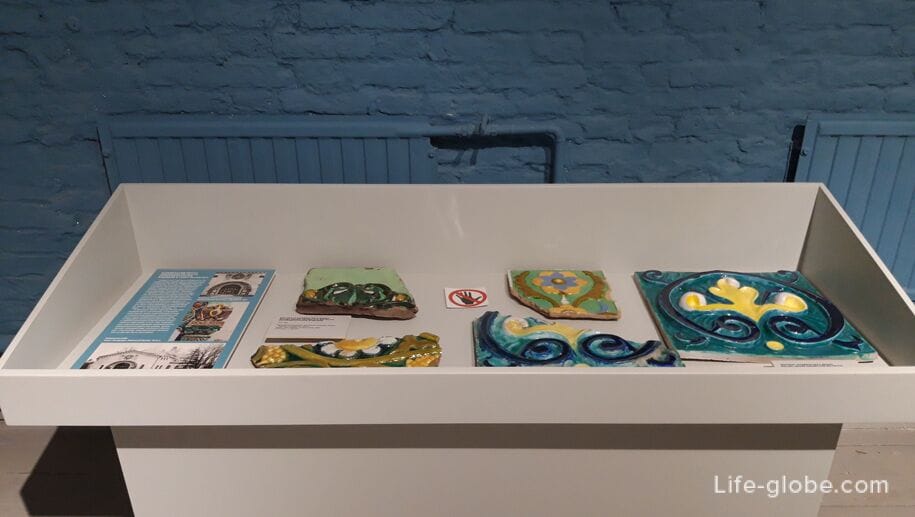
Sculpture " Sirin Bird», furnace completion detail. Not earlier than 1908. Abo tile factory. Ceramics, colored glaze, gilding.
The sculpture is a fragment of a furnace, a sample of which was provided by the Abo plant in 1908 at the International Construction and Art Exhibition in Novaya Derevnya. It is known that at this exhibition the Finnish factory demonstrated furnaces created according to the projects of the architect, restorer and researcher of Russian architecture V. A. Pokrovsky. Therefore, most likely, this model was made according to his sketch.
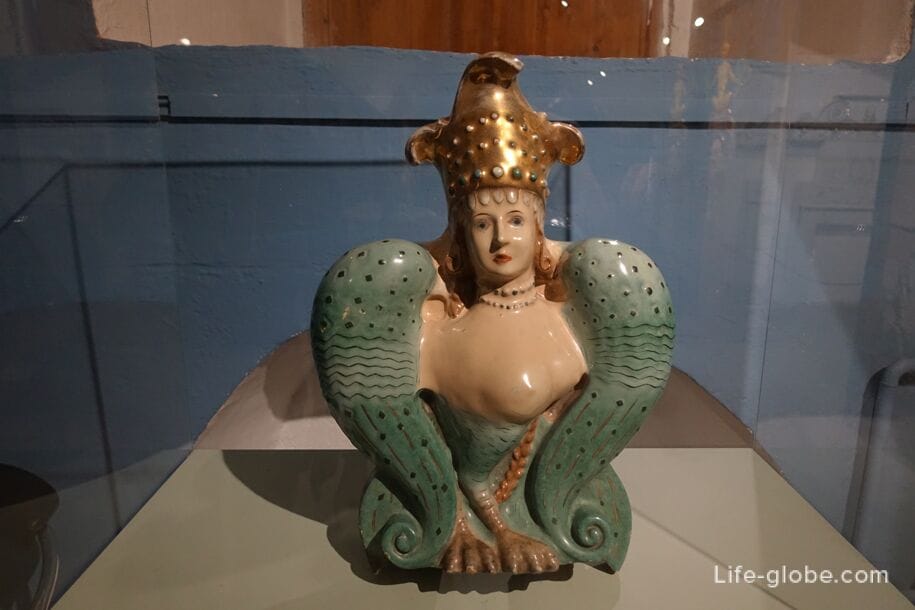
Floor tiles, early 20th century. Factory "Villeroy and Boch", Metlach, Germany. Clay, pressing, roasting.
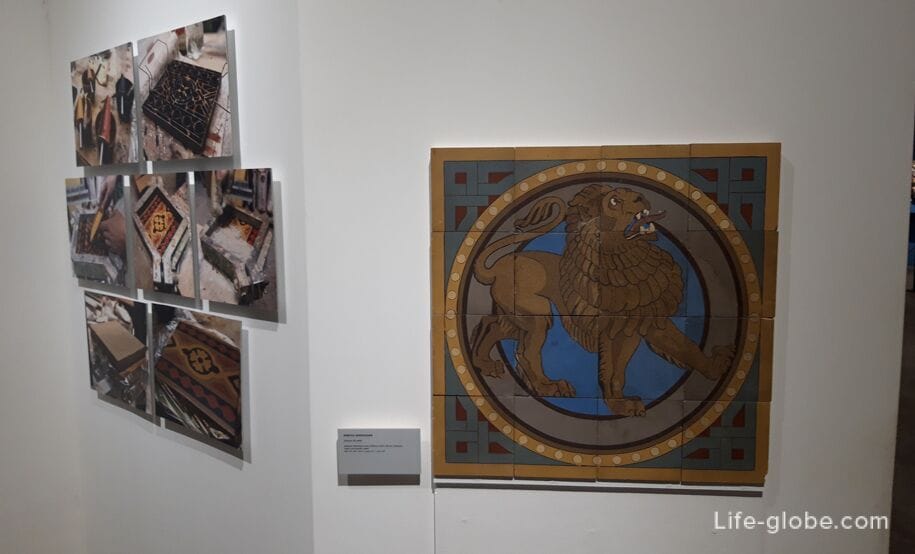
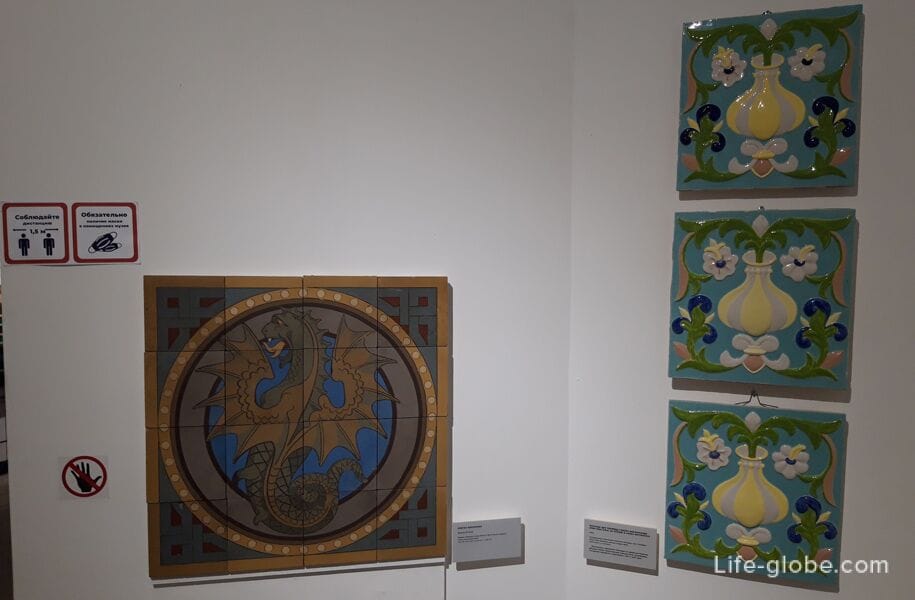
Practical information
The museum exposition of architectural art ceramics is complemented by interactive and multimedia means.
Entrance to the museum of architectural art ceramics "KERAMARKH" is paid. You can buy a ticket only to this museum or a complex ticket to visit other objects and museums of the Peter and Paul Fortress, including The Peter and Paul Cathedral with the Grand Ducal Tomb, the Trubetskoy Bastion Prison, the Museum of Science and Technology, the Glushko Museum of Cosmonautics and Rocket Technology, etc.
The opening hours of the museum, the cost and conditions of visiting, as well as other information, are recommended to check on the official website of the State Museum of the History of St. Petersburg, which includes most of the museums on the territory of the Peter and Paul Fortress, including the Museum of architectural and artistic ceramics "KERAMARCH".
Museum website: pbmuseum.
The entrance to the territory of the Peter and Paul Fortress is free (free of charge).
You can also visit the Peter and Paul Fortress with one of the excursions
Nearest metro stations: "Gorkovskaya" and "Sportivnaya".
All accommodation facilities in St. Petersburg, including in the city center and near the Peter and Paul Fortress, can be viewed and booked here




